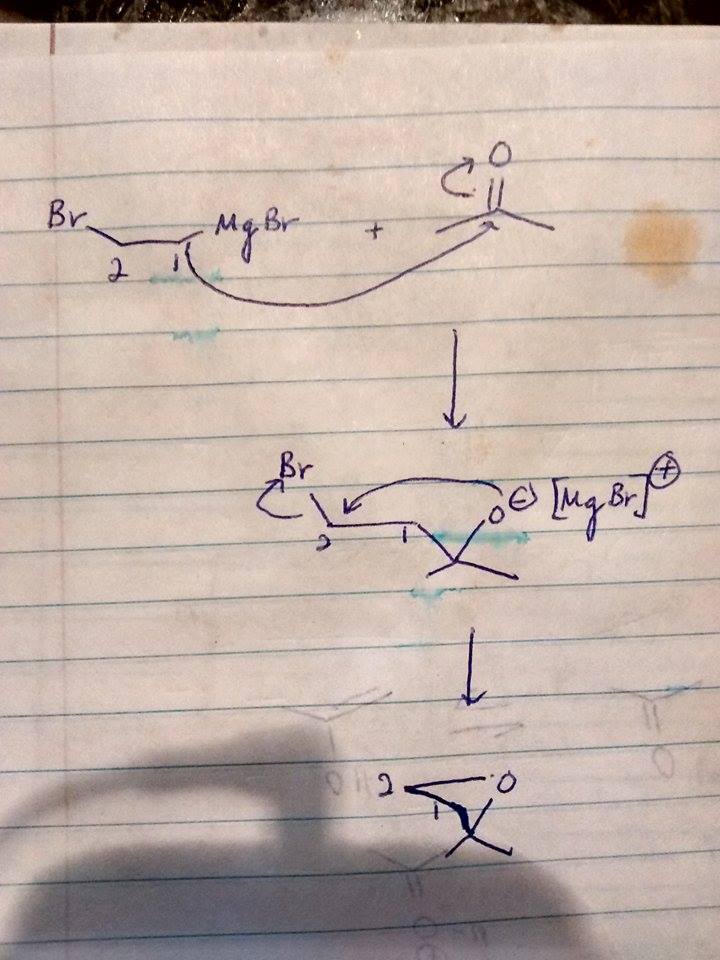So let's say I have a symmetric 1,2-dihalide (the halides are identical) and I wanted to make a Grignard and I only add 1 eq. of magnesium metal ...
Will I get 1 eq. of asymmetric Grignards (i.e. only one side of the product has the C-MgBr bond) as my product or will:
a) Some of the product be "double" Grignards - i.e. both sides of what used to be the 1,2-dihalide now have C-MgBr bonds?
b) I get some E2 elimination product from Grignards robbing protons from unreacted 1,2-dihalides?
c) A combination of the above?
d) Something else entirely?
Let's say the above reaction works the way I want it to and we get the 1 eq. of asymmetric Grignard reagent.
We then react it with a carbonyl containing compound such as acetone ... do we get an epoxide? Are there even any routes to an epoxide? This suggested as a possible product ...
But I don't see the epoxide.

